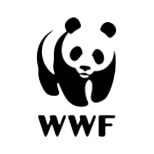News about Nilos Rings

SKF Brazil, one of the largest bearing manufacturers in the world, mentions NILOS RINGS in their Technical Communication Newsletter #06 concerning the appropriate sealants to prevent contaminants and to prevent leakage of lubricated bearings:
“Another type of very simple and efficient contact seal is the NILOS RING. It consists of a piece of steel sheet with an edge that rubs against one of the bearing rings. It can grind against the internal or external rings. As the edge is pressed against the ring, after some time of operation it creates a groove which provides an excellent seal.”
Still on the references that SKF makes about NILOS RINGS, we also cite the latest edition of its General Catalogue, which, in matters concerning seals, SKF says on pages 146 and 147, the following characteristics of great importance and that differentiates our seals from the others, as their efficiency, being:
“The elastic sealing rings provide simple, economical and space-saving solution… After a break-in period, these contact seals (NILOS) become contact-free seals…”
This observation made by SKF is a technical curiosity, it confirms that NILOS RINGS never lose their sealing effect, as they wear out after their sealing edge after a certain period of operation, they become non-contact seals , which will seal indefinitely.


